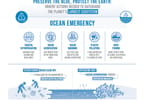The Indian leisure traveler is now more open to exploring newer destinations, reveals the latest edition of the Nielsen India Outbound Monitor. A study done by the Nielsen Company in association with the Pacific Asia Travel Association (PATA), shows that destinations such as China, Maldives, Indonesia, the African continent, and even neighboring Bangladesh, have witnessed an increase in interest among Indian travelers as destinations they plan to visit in the future.
While on the current list of most visited destinations, Singapore remains the top destination for both the business and leisure travller, but its dominance has diminished since 2008. Said Surekha Poddar, executive director, The Nielsen Company: “The diversification in destinations indicates a greater sense of adventurism and discovery that should be heartening for tourism as a whole, and a clear symptom of a confident Indian consumer mimicking their country’s confidence and prominence. The Indian traveler is set to become a prized possession as potential spending power and disposition to travel to new countries increases.”
In terms of trips taken in the last year, Singapore’s share based on travelers indicating their most recent trip taken, has reduced to 24% from 32% in 2008. Similarly, for business travel its share has fallen from 25% in 2008 to 15% in 2010. Malaysia ranks second for leisure travel and Dubai for business travel.
Countries that have shown a rise in business traffic from India include Japan, China, and Sri Lanka. On the whole, Asian countries account for 76% of leisure travel by Indians and 63% for business travel. Regions such as Europe attract a higher percentage of business traffic (14%) rather than leisure (10%).
The top reasons which drive destination choice for leisure travelers are visiting friends/relatives (26%), range of leisure and entertainment activities (18%), and scenic/natural beauty of the destination (10%). Visiting friends/relatives is the most cited reason for older travelers, and their destinations largely tend to be USA and the UK. The corporate segment, which forms the bulk of business travelers, choose destinations based on perceived business conduciveness for conferences and off-sites.
“Countries competing for Indian globetrotters can take definitive cues from the drivers of destination decision-making. By showcasing their receptivity to visitors and a variety of recreational facilities ‘country’ marketers can hope to become the destination of choice,” said Poddar.
Among places that leisure travelers plan to travel to, there seems to be a significant shift to newer destinations such as China, Indonesia, and Africa, among others. While most outbound travelers from India belong to the affluent, well-educated segment of urban India, there are some differences in the profile of travelers based on the size of the town or city. Travelers from the larger Tier I cities tend to be of a higher socio-economic profile and younger than those from Tier II cities. There has been a rise in the intention to travel among both Tier I and Tier II travelers, also, 22% of travel from Tier II cities is funded by their relatives, while for Tier I cities it is a mere 14%. Travelers from Tier II cities who are funding their own travel tend to spend a lot more time planning their trips and largely rely on travel agents to source information for trip planning.
“With the growth of India as a source market for the travel industry, there is an increasingly greater focus on targeting the Indian traveler. One of the most critical observations is that the Indian traveler is not a homogenous entity. Apart from the natural segments of those traveling for business or leisure, there are key sub-segments across tiers of towns and different life stages and work profile. Travel motivations also differ in each of these sub-segments as do their planning and their choices,” added Poddar.
The Indian traveler remains as value conscious as ever. With growing choices at home, Indians have not really expanded their travel budgets. Overall, travel expenditure has remained the same as 2008 among leisure travelers. Business travelers have, however, seen a significant reduction in overall trip expenses.
According to the study, the average trip cost for the entire family is around US$3,663. As the average group comprises two travelers, it works out to US$1,645 per traveler. Flight and accommodation account for around 45% of costs and the rest is available for the traveler to apportion across other expenses like shopping, food, recreational/sightseeing activities, and communication. Of the discretionary spend, shopping gets the lion’s share and outbound tourists spend US$1,000 on an average on shopping, per family.
Thai Airways emerged as the top airline among leisure travelers in terms of customer satisfaction, followed by Jet Airways and Malaysia Airlines. For business travelers, Singapore Airlines tops the list, followed by Emirates and Malaysia Airlines.
For travelers booking via travel agents, small local travel agents combined account for a little over a quarter of all bookings. Among the national players, the OTAs (Online Travel Agents), Yatra and Make My Trip, and travel agencies SOTC and Thomas Cook together, account for the bulk of bookings. Leisure travelers who booked through SOTC gave it the highest satisfaction ratings, while business travelers said they preferred booking through Thomas Cook the most.
CHANGING ASPIRATIONS OF LEISURE TRAVELERS
Name of Country 2010% 2008%
Singapore………..24……..35
Malaysia…………..14……..11
Dubai………………13……..19
Thailand…………..12……….9
Switzerland………10……..13
Nepal………………..9……….9
Australia……………9……..13
Hong Kong…………8……….5
US…………………….8……..10
Japan………………..6……….6
Other key countries in which interest has risen in 2010: China, Indonesia, Bangladesh, Maldives, Sri Lanka, Macau, South Africa, Mauritius, and UK coming in as a group at 38% in 2010 and 20% in 2008.
WHAT TO TAKE AWAY FROM THIS ARTICLE:
- A study done by the Nielsen Company in association with the Pacific Asia Travel Association (PATA), shows that destinations such as China, Maldives, Indonesia, the African continent, and even neighboring Bangladesh, have witnessed an increase in interest among Indian travelers as destinations they plan to visit in the future.
- There has been a rise in the intention to travel among both Tier I and Tier II travelers, also, 22% of travel from Tier II cities is funded by their relatives, while for Tier I cities it is a mere 14%.
- While most outbound travelers from India belong to the affluent, well-educated segment of urban India, there are some differences in the profile of travelers based on the size of the town or city.






















